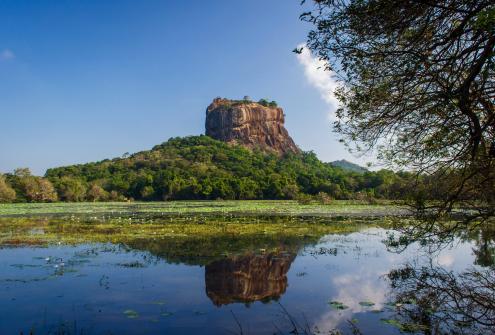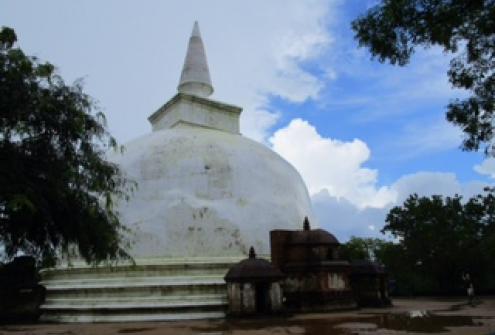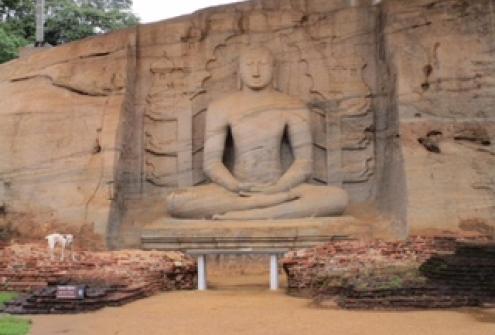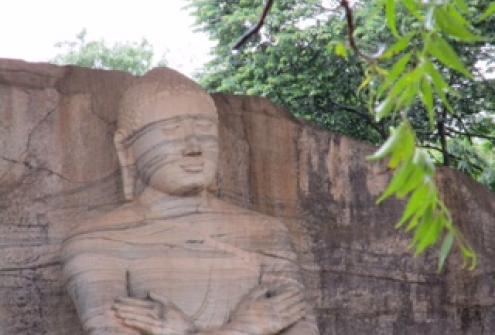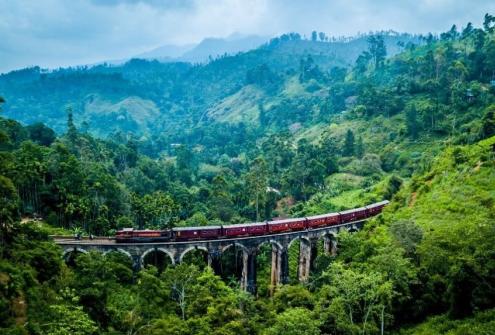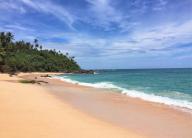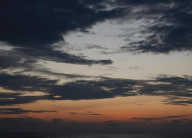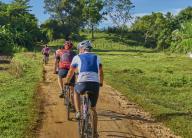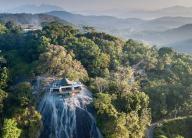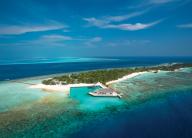Best Time to Visit: April-Sept ; ill advised: Dec/Jan
"The Island of Ceylon (Sri Lanka) is a small universe; it contains as many variations of culture, scenery and climate as some countries a dozen times its size" Sir Arthur C Clarke
With eight UNESCO World Heritage sites, one more than Egypt boasts, Sri Lanka is a small miracle. There are six Cultural Sites, The ancient Cities of Polonnaruwa & Sigiriya, The Golden Temple of Dambulla, the Old Town of Galle and the sacred Cities of Anuradhapura & Kandy, where the remains of Sri Lanka's ancient and medieval civilisations, palaces, monasteries, shrines, water gardens and temples, bear witness to thriving kingdoms and the deep influence of Buddhism.
In addition, there are two natural World Heritage Sites with the Sinharaja Forest Reserve and the Central Highlands of Sri Lanka. The largest and most archeologically dramatic sites are located in the UNESCO designated Cultural Triangle, the area formed by linking the ancient capitals of Anuradhapura, Polonnaruwa and Kandy. This area is a living heritage, where the visitor will see Buddhist monks and reverent devotees paying homage to their beliefs. Passing through this region you can trace the introduction of Buddhism, which inspired kings to undertake astounding feats of engineering; build complex palaces, fortresses to secure the kingdoms and ultimately the impact of the arrival of the colonial powers from the 16th Century: Portuguese; Dutch and latterly the British. Experiencing Sri Lanka's heritage sites takes you on a spiritual journey that will uplift and amaze, inspire and refresh. Whether you are a cultural junky or looking to sample all that Sri Lanka has to offer, the island's compact dimensions mean it is possible to combine a visit to several of these marvels during even the briefest visits.
The Cultural Triangle & Ancient Kingdoms
With a rich history extending back over 2500 years, an air of mystery and magic hangs over Sri Lanka's ancient kingdoms. Situated in north central Sri Lanka, a four drive from Colombo Airport, the Cultural Triangle is home to five World Heritage Sites. Beautiful scenery combined with thousands of years of history makes this a fascinating area to visit for more adventurous travellers. The points of the triangle are formed by Anuradhapura in the North, Kandy to the South and Polonnaruwa to the East. Each, a capital city in its heyday. Although Kandy is celebrated as the last capital of the Sinhala kings, it is Anuradhapura, which bears the distinction of being the first capital, as well as the first seat from which to unite the whole of Sri Lanka; it remained so for fourteen centuries, before it was abandoned. Today, Anuradhapura is the venerated capital of Buddhism and still attracts devotees and tourists alike who flock to marvel at the great stupas and the revered Bo Tree, which is over 2,300 years old and said to be the oldest tree in the world.
Sigiriya
The 5th century Sigiriya rock fortress is a World Heritage Site, was built by King Kashyapa (477-495 AD). The 'Lion Rock' is a citadel of unusual beauty rising 200 meters from the scrub jungle. The rock was the innermost stronghold of the 70 hectare fortified town. A moat, rampart, and extensive gardens including the renowned water gardens ring the base of the rock. Originally utilized as a Buddhist monastery dedicated to the goddess Tara, the citadel eventually became the summer palace of the parricide king, who chose to rule the country from here, rather than Anuradhapura. Climbing Sigiriya has some steep steps and it is best to avoid the heat of the middle of the day when climbing to the top. Young children, the less agile & anyone with a real fear of heights may find the steps difficult and will need close supervision. However, the climb is well worth the effort! Just one level before reaching the summit, you will come upon the huge lion's claw, all that remains of the enormous lion whose brick throat once served as the entrance to the roof top palace. At the summit of the rock, you can take in the magnificent panoramic views over the wide flat plains, a truly stunning experience. Not to be missed as you climb the steps up the side of the rock-face are the world-renowned frescoes of the 'Heavenly Maidens' of Sigiriya, which are in a sheltered pocket of the rock approached by a spiral stairway. These frescoes are painted in earth pigments on plaster & are remarkably well preserved.
Pidurangala
A couple of kilometres north of Sigiriya, another large rock outcrop is home to the Pidurangala Royal Cave Temple. According to tradition, the monastery here dates from the arrival of Kassapa, when the monks who were then living at Sigiriya were relocated to make room for the king’s palace; Kassapa constructed new dwellings and a temple here to recompense them. It’s a pleasant short bike or tuktuk ride to the foot of Pidurangala rock: head down the road north of Sigiriya and continue for about 750m until you reach a modern white temple, the Pidurangala Sigiri Rajamaha Viharaya (about 100m further on along this road on the left you’ll also find the interesting remains of some old monastic buildings, including the ruins of a sizeable brick dagoba).
Steps lead steeply up the hillside behind the Pidurangala Viharaya to a terrace just below the summit of the rock (a stiff 15min climb), where you’ll find the Royal Cave Temple itself, although despite the rather grand name there’s not much to see apart from a long reclining Buddha under a large rock overhang, its upper half restored in brick. The statue is accompanied by figures of Vishnu and Saman and decorated with very faded murals.Climbing Pidurangala offers not only a great supplement to also climbing the stunning Sigiriya, due to the marvelous views of Sigiriya from the rock itself; but it also offers an alternative to climbing Sigiriya if you are looking for a cheaper and less touristy experience. The route tends to have far less visitors and can give a far more intimate experience of seeing Sigiriya as well as the ornate statues and sights that line the slightly trickier and more demanding trip to the top.
Minneriya tank
This 300 square hectare water tank, was built by King Mahasena in the 4th Century. Not far from the Sigiriya Rock, during the months of August through to October, elephants converge on the receding shores of the Minneriya Tank, (lake) as they search for water during the dry season, for what is known as “The Gathering”. This spectacular sight allows visitors to witness one of the largest concentrations of Asian Elephants in a small area. The tank & forest surroundings supports an incredible variety of wildlife; crocodiles, fish, pelicans, herons and storks, while the trees support a vast range of birdlife including the Sri Lanka Jungle fowl and Grey hornbills.
Polonnaruwa
Polonnaruwa was the 2nd capital city of Sri Lanka, built in the 11th and 12th centuries AD, and which is also a World Heritage Site. Within the ruins of the Royal Palace, the Gal Viharaya, there are four splendid statues of the Buddha in 'Upright', 'Sedentary' and 'Recumbent' postures carved out of rock. In addition, the remains of stunning buildings including the Audience Hall, the Lotus Bath, king Parakramabahu's statue, and the Parakrama Samudraya lake built by King Parakramabahu the great, provide an insight into this great historic city. Polonnaruwa is also home to monuments of famous places of worship including the Shiva Temple, the Lankathilake, the Watadage, the Galpotha, the Kiri Vehera and the remains of a former Temple of the Tooth Relic, now found in Kandy. Approximately a one hour drive from Sigiriya, we recommend most clients visit Polonnaruwa in conjunction with Sigiriya during a stay in the Cultural Triangle. Visiting Polonnaruwa in the morning combines well with an afternoon Jeep Safari from Harbarana, in one the close-by national parks to see wild elephant and the vast array of local wildlife.
Anuradhapura
Anuradhapura was the first capital and undoubtedly the grandest city of the ancient Sri Lanka, It is the home of two World Heritage sites. Many places of historical and archaeological interest are found here. However, given the one and half to two hour journey to reach Anuradhapura from most of the hotels in the Sigiriya district and the scale of the ancient city, we recommend a full day is allocated to this attraction and visitors who are restricted on time normally chose not to visit Anuradhapura. Sri Maha Bodhi, the sacred bo-tree, was brought as a sapling of the tree under which prince Siddhartha attained to enlightenment and it is over 2,300 years old and is said to be the oldest historically documented tree in the world. At Brazen Palace, (2nd century B.C), the 1600 stone columns you see are all that is left of a magnificent multi-storied residence for monks. Ruwanweliseya (2nd century B.C) is the most famous of all the Dagobas.
It originally depicted the perfect 'bubble shape' that modern restoration has not been able to accurately reproduce. The Samadhi' Buddha statue (4th century AD) is one of the most famous statues, depicting the Buddha in a state of 'Samadhi' or deep meditation. Isurumuniya rock temple (3rd century B.C) is well known for its rock carvings of 'The Lovers'. Kuttam Pokuna – twin ponds (6th century AD) was used by the Buddhist monks as a bathing pool. Thuparama Dagoba (3rd century B.C) is the oldest Dagoba in the island, which enshrines the right collarbone of the Buddha. Close by, some 30 minutes by car, in Mihintale, is the site where Buddhism was first introduced to Sri Lanka. Found on this rock are many shrines and dwellings originally used by monks. A grand stairway of 1,840 steps made of 15 feet wide granite slabs leads to the summit from where one can get a splendid view of the surrounding countryside.
Dambulla
The Dambulla Rock Temple, was donated by king Walagambahu in the 1st century BC to Buddhist monks. Dambulla is a World Heritage Site and is the most impressive of Sri Lanka's cave temples. The complex of five caves with over 2000 sq. meters of painted walls and the ceiling is the largest area of cave paintings found in the world. These caves contain over 1500 images of the Buddha of which the largest is the colossal figure of the Buddha carved out of rock spanning 14 meters. Close to the town of Dambulla this attraction is easily accessed although it requires walking up a considerable number of steps to reach the caves from the road. If you are a little short of time, a visit to the Dambulla rock temple can be combined with travelling to or from the Sigiriya area.
Aukana
One of Sri Lanka’s most perfect and elegant statues, the Aukana Buddha lies to the west of the large Kala Wewa tank near Anuradhapura. The creation of both the temple and the tank (reservoir) is attributed to King Dhatusena in the 5th century. The statue stands 12m-high and is completely free-standing, carved from a single rock. It is an example of the Abhayamudra Buddha, showing superhuman qualities: the right-handed gesture, raised to the right shoulder with the palm spread, signifies lack of fear. The left hands position draws the worshipper to Buddha for release from their earthly bonds. The statue has gained significance in recent times due to the destruction of a similar Buddha in Afghanistan. The Aukana Buddha can be visited en route to Anuradhapura and can easily be combined with a visit to the ancient monastery site of Sasseruwa. It only takes a maximum of 45 minutes to visit the site and the nearby Kala Wewa tank is an excellent place to stop off and have a picnic in scenic surroundings.
Ritigala
Deep inside the Ritigala Strict Nature Reserve, off the Anuradhapura–Habarana road, are the partially restored ruins of an extensive monastic and cave complex. The ruins lie on a hill, which at 766m isn’t exactly high, but are nevertheless a striking feature in the flat, dry landscape surrounding it. The 24-hectare site is isolated and almost deserted. The site is included in the Cultural Triangle round ticket; otherwise, individual tickets cost Rs 1800/1000 (adult/child). Ritigala also has a place in mythology. It’s claimed to be the spot from which Hanuman (the monkey god) leapt to India to tell Rama that he had discovered where Sita was being held by the king of Lanka. Mythology also offers an explanation for the abundance of healing herbs and plants found in Ritigala: it‟s said that Hanuman, on his way back to Lanka with healing Himalayan herbs for Rama‟s wounded brother, dropped some over Ritigala. Monks found Ritigala‟s caves ideal for an ascetic existence, and more than 70 such caves have been discovered.
Royals proved generous patrons, especially King Sena I, who in the 9th century made an endowment of a monastery to the pamsukulika (rag robes) monks. If you are short of time or you want just a small taste of culture, this would be a good addition to your itinerary for 2 or 3 nights which makes Kegalle is a perfect base. The transfer time from the airport is just two- two and a half hours. It will give you an opportunity to have a taste of culture and nature and the rest of the time to relax on the beach. The drive time to Kandy is 3-3 and a half hours. Kandy- Kegalle/Pinnawela is one hour.




